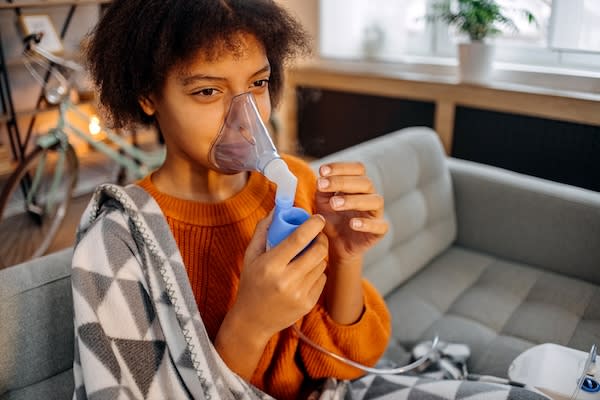Top tips to prevent bullying in schools

[5 MIN READ]
In this article:
-
During Bullying Prevention Month in October, talk to your child or teen about whether they see bullying at their school, and how to prevent bullying.
-
The main definition of bullying is “an imbalance of power.”
-
Bullying is more than just physical harassment — it can also take the form of emotional or social harassment.
Top tips to prevent bullying in schools
Decades ago, the word “bullying” evoked images of mean-looking boys roughing up a classmate on his way to school. While that’s one kind of bullying, there are many other ways children and teens can target others that would also be considered bullying behavior.
According to the National Center for Educational Statistics, one in five children report being bullied. October is Bullying Prevention Month, which means it’s a good time to take a look at a problem that’s been around as long as humans have.
What is bullying?
Simply put, bullying is an imbalance of power. “That can be anything from physical to emotional power,” says psychologist Robin Henderson, PsyD, chief executive of behavioral health for Providence Oregon and chief clinical officer of Work2BeWell, a mental health and wellness program for teens. “There is a system in our schools. Popular kids have power, and they can use that power to bully somebody. Very rarely is this bullying a one-time occurrence — it’s something that happens over time.”
While bullying is very much still a problem, both in person and online, schools and other organizations that serve children and teens are addressing it more than they did in the past.
“I think we’ve come a long way,” says Henderson. “We’ve gotten away from the idea that you just have to tough it out. We are educating kids about what bullying is so we can identify it and stop it.”
How to respond to bullying
While parents and teachers can certainly do their part to curb bullying, they can’t be everywhere at once. So, it’s important to teach coping mechanisms to children and teens. Here are a few that are targeted specifically at young people:
1. Know what to look for.
Bullying isn’t always as clear cut as it seems in the movies. We know what physical bullying looks like — it’s easy enough to spot someone being shoved around in the halls, tripped or kicked. But there are other, more common types of bullying, too, that may be harder to spot.
- Verbal bullying – any ongoing name-calling, insults, threats or hurtful words. Verbal bullying might target someone’s appearance, their religion, sexual orientation, race or any other attribute you can think of.
- Relational and social bullying – whenever someone tries to deliberately exclude someone else from the group or damage someone’s reputation or their relationships.
- Cyberbullying – when relational or verbal bullying happens online. It can happen on cell phones, social media or anywhere with a screen.
2. Always be looking.
Once you’re clear on what to look for, keep your eyes open — both inside and out of the school environment. Keep listening. Maybe you’ll witness aggressive behavior or bullying in action, or more likely, you’ll hear about an act of bullying secondhand.
3. When you see something, say something.
If you witness anything that looks like bullying to you, it’s time to be brave and be the one to step up. We have to protect each other and speak out on each other’s behalf. What you say, and who you say it to, is going to depend on the circumstance. You’ll have to use your best judgment on whether you speak up directly to the person doing the bullying, or report it to a trusted adult (like a parent, mentor, school counselor or another member of the school staff).
“I guarantee this,” says Henderson, “if you’re being bullied by someone, someone else is being bullied by them too.”
4. Be mindful of your own behavior.
Sometimes, we may not realize the little ways we contribute to a situation that leaves someone feeling bullied, excluded or valueless. So, take a minute and really think about it. To the best of your ability, are you being inclusive? Are you practicing compassion? Are you treating everyone with dignity? Is there anyone you and your friends repeatedly make jokes about, even if you don’t make these jokes in front of that person? When we repeatedly poke fun at someone behind their back, we create an environment where it’s easier for someone else to tease them to their face.
5. Be a friend.
Maybe the greatest way you can help stop bullying is by being a friend to someone who could really use it. Pay a compliment to someone who needs a kind word or a self-esteem boost. Invite someone to hang out. Learn something about them. Sometimes the best way to stand up for each other is just to stand with each other.
“One of the most disarming ways of dealing with a bully is to be kind,” says Henderson. “It’s all about the idea of flooding the zone with positivity.”
The more people who are actively looking to befriend someone who is being bullied, the less power the bully has. It’s important to create a culture that won’t stand for bullying — and that involves every single individual.
Contributing caregiver
Psychologist Robin Henderson, PsyD, is chief executive of behavioral health for Providence Oregon and chief clinical officer of Work2BeWell, a mental health and wellness program for teens.
Find a doctor
If you are looking for a Providence pediatrician or mental health provider, you can search for one in our provider directory.
Download the Providence app
It’s all in the app: easily stay connected with Providence and your health. With the Providence app, you can schedule appointments, have virtual visits from the comfort of your own home, get health recommendations personalized for you, access your health records and so much more. Learn more and download the app.
Related resources
Mental health disorders in children
How to recognize suicidal tendencies in teens
How to stand up to cyber bullies
This information is not intended as a substitute for professional medical care. Always follow your health care professional’s instructions.



